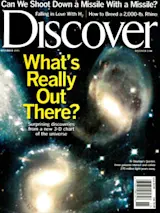The handful of people who would be the first to detect a nuclear missile attack against the United States work just outside the town of Colorado Springs. Their daily commute takes them down a sloping mile-long tunnel, past baffled steel blast doors that are 20 feet high, three feet thick, and weigh 25 tons each, into the heart of Cheyenne Mountain. There, surrounded on all sides by at least 2,000 feet of granite, they spend eight-hour shifts in the missile-warning center, one of 15 subterranean buildings arrayed along a three-dimensional tic-tac-toe grid of intersecting tunnels. This is the central coordination facility for the NORAD (North American Aerospace Defense) command.
Data from satellites and a global network of radar stations flow into computers at the missile-warning center, where eight or nine people during a typical shift sit in front of 17-inch monitors. Hardly a day passes without the detection of a ...














